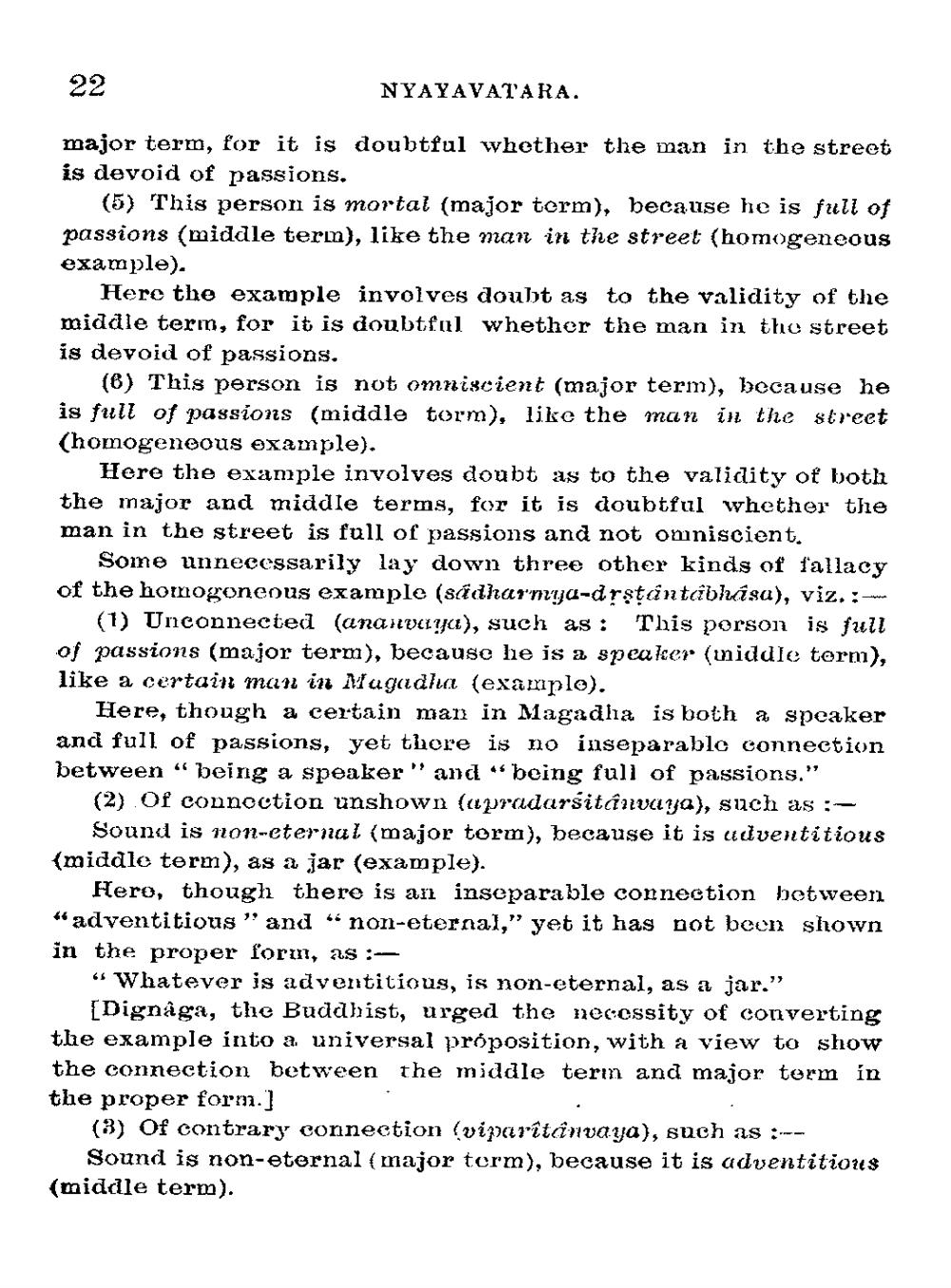________________
22
NYAYAVATARA.
major term, for it is doubtful whether the man in the street is devoid of passions.
(5) This person is mortal (major term), because he is full of passions (middle term), like the man in the street (homogeneous example).
Here the example involves doubt as to the validity of the middle term, for it is doubtful whether the man in the street is devoid of passions.
(6) This person is not omniscient (major term), because he is full of passions (middle torm), like the man in the street (homogeneous example).
Here the example involves doubt as to the validity of both the major and middle terms, for it is doubtful whether the man in the street is full of passions and not omniscient.
Some unnecessarily lay down three other kinds of fallacy of the homogoneous example (sádharmya-drståntaibhasa), viz. :
(1) Unconnected (anahvYC), such as : This porson is full of passions (major term), because he is a speaker (uniddle torm), like a certain man in Mugadla (examplo).
Here, though a certain man in Magadha is both a speaker and full of passions, yet there is no inseparable connection between “being a speaker" and "being full of passions."
(2) Of connection unshown (upradarsitánvaija), such as :
Sound is non-eternal (major term), because it is udventitious (middle term), as a jar (example).
Hero, though there is an inseparable connection between “adventitious” and “ non-eternal," yet it has not been shown in the proper form, as :
" Whatever is adventitious, is non-eternal, as a jar."
[Dignåga, the Buddhist, urged the necessity of converting the example into a universal proposition, with a view to show the connection between the middle terın and major term in the proper form.]
(3) Of contrary connection (viparitânvaya), such as :---
Sound is non-eternal (major term), because it is adventitious (middle term).




